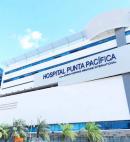Panama: A New Destination for Health Tourism
According to statistics from the National Center for Policy Analysis, Panama makes U.S. and European patients save somewhere between 40 and 70 percent
Plastic surgery, cardiology, orthopedics, stomatology, ophthalmology and fertility clinics are some of the most sought-after services in Panama, a country also pegged as a destination for health tourism.
Even though the Central American nation is usually seen as the perfect place for vacations, leisure, shopping and business, over the past eight years it has also elbowed its way onto the map for its effective, safe and accurate medical services at prices far more affordable than in many other countries. This condition has given way to health tourism.
The prestige the country has garnered in this respect has prompted the arrival of foreign patients interested in treatments and procedures.
Luis Santamaría, director general of Saludpanama.com —one of the driving forces behind health tourism- says that earlier in this century the traffic of patients was indeed a commercial possibility for the nation, so Panamanian physicians started welcoming health travelers with the same kindheartedness they treat their local patients.
As this market and its potentials started to grow, the term health tourism was suddenly all the rage. In his own opinion, doctors were the true harbingers of this activity as they became the first to invest in a bid to lure patients from overseas, thus standing their competitive ground with other destinations, like Colombia and Costa Rica.
According to a publication issued by the National Center for Policy Analysis, Panama makes U.S. and European patients save somewhere between 40 and 70 percent, while many health professionals have seen their reputation accrue for the way they work with the same medical equipment and technology used in developed countries’ hospital and clinics.
Another advantage that singles Panama out in this field is its multiple compatibility with the Americans, owed in part to the fact that they stayed at the Canal Zone for decades.
“We speak their language, use the same currency and understand their traditions. Making a patient feel like home is the nitty-gritty of his recovery, and that’s what Panama offers U.S. patients. We’re equally compatible with Latin American nations. Health tourism is for everyone and in Panama we don’t need to make a difference,” Mr. Santamaría says.
He adds that health-oriented travelers shell out the same amount that ten regular sunbathers fork over, so this is not a quantitative business, but a qualitative one that takes logistic and economic support on the part of the government in order to make it both ethical and responsible.
Private investment also plays a key role. That’s why companies like MedicalPan, brokers, travel agencies, as well as hospitals and clinics, manage the patients’ appointments, checkups, transportation and stays. They also deliver other travel packages to help them make the most of their visits.
The fact of the matter is that today, hospitals like Punta Pacífica y San Fernando have been certified by the Joint International Commission, a move that makes patients more confident and pushes foreign demand to a staggering 400 percent.
At the same time, some hospitals are affiliated to major international organizations, such as International Baptist Health in Miami, the Cleveland Clinic, the Center for Health Science in Tulane, the John Hopkins International Miami Children’s Hospital, the Medical Center at the Nebraska University, the Kendall Medical Center in Florida and the Beth Israel Deaconess Medical Center de Harvard.
Mr. Santamaria is upbeat about the future of this economic activity in Panama. “While the former administration’s authorities ignored altogether the private sector’s needs in terms of medical tourism, in its first one hundred days in office the new government has already shown willingness to join the teamwork,” he concluded.



























































































































